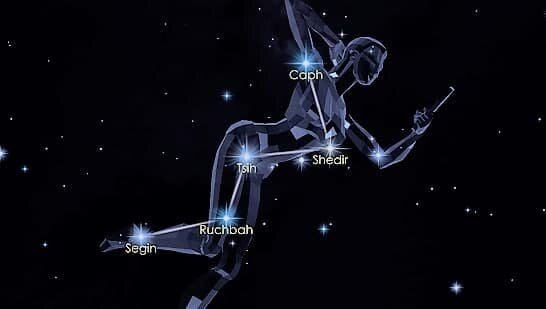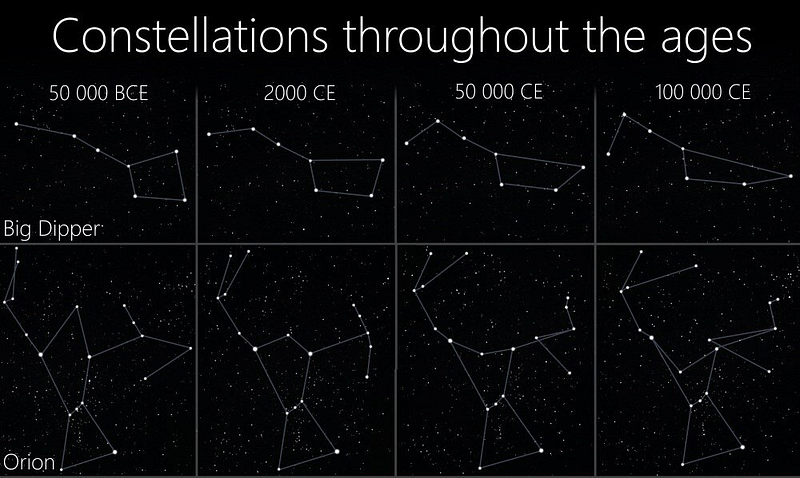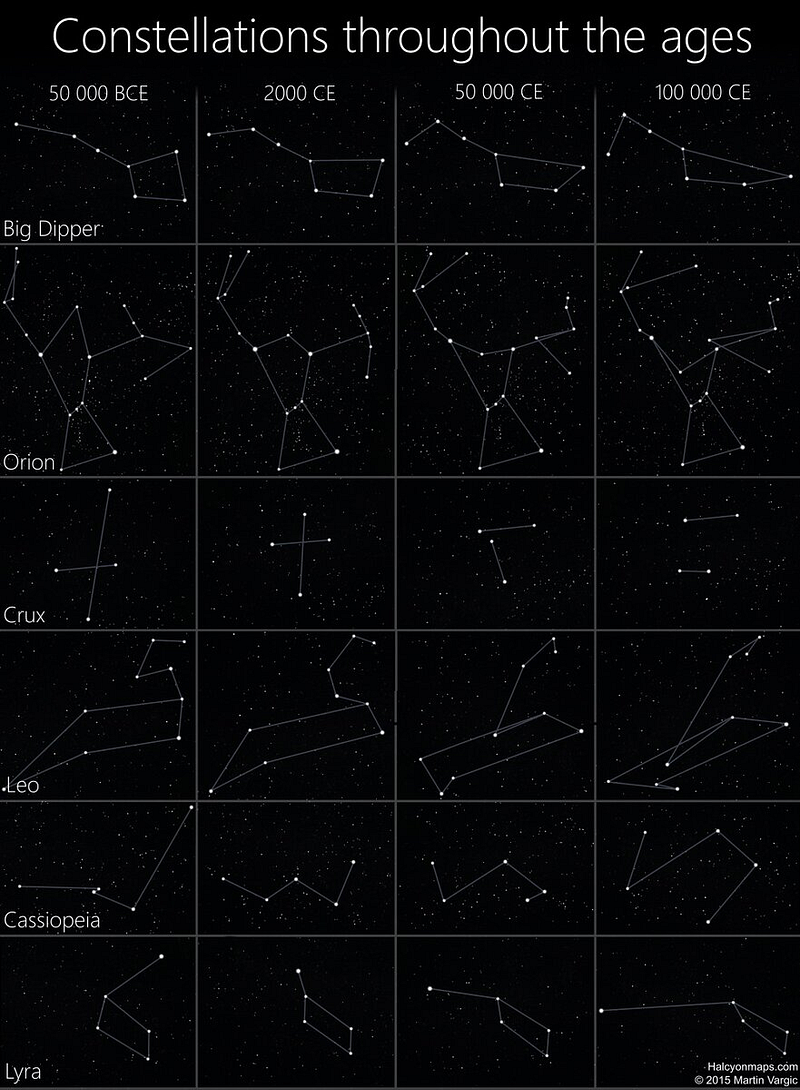The Evolving Nature of Constellations Over 100,000 Years
Written on
Chapter 1: The Dynamic Cosmos
The universe is in a constant state of flux, with stars moving chaotically in relation to one another. The constellations we admire in the night sky are no exception. For an average human lifespan of 70–80 years, the shifts in a star's position are virtually imperceptible. Despite the rapid speeds at which stars travel—often around 50 kilometers per second—our eyes cannot detect these gradual changes over vast distances. Only a few stars, exhibiting exceptionally high velocities, show noticeable movement when observed over several years.
Section 1.1: Understanding Stellar Motion
Why do constellations appear to change shape? While we perceive the stars of a constellation as lying on the same plane, they are, in reality, at different distances from Earth. This illusion of uniform brightness arises because distant stars may shine brighter than those that are closer.

The stars that are nearer to us will exhibit more noticeable positional changes. To illustrate this, consider standing at a point marked with a blue dot while observing a person 50 meters away. If that person walks 100 meters, the movement is easily observed. Conversely, an airplane flying at a distance of 1 kilometer must cover 2 kilometers to appear to land in the same location as the person. In both cases, the angle of observation remains the same.

For example, Vega, a star in the constellation Lyra, is situated 25 light-years from our Sun, while other stars in this constellation are positioned around 600–800 light-years away. As time passes, the positional changes of Vega will be more apparent, leading to a gradual alteration in the shape of the constellation.
Chapter 2: Future Constellations
What transformations can we expect in our constellations over the coming millennia? The following images depict how well-known constellations have evolved from 50,000 BC to the present and how they are projected to change in the next 100,000 years.


As time progresses, the deformation of other constellations is inevitable. While it is improbable for any single individual to witness these transformations, we can pass down our observations to future generations. This way, they will have the chance to compare their views of the constellations with those we currently see. In several million years, the night sky will transform dramatically, and future observers will categorize stars into entirely new constellations.
This video explores how constellations will look in 100,000 years, illustrating changes in star positions and formations.
A time-lapse video demonstrating the changes in constellations over 100,000 years in just 20 seconds.
Feel free to clap if you wish to see more articles about space in your feed! Subscribe to our channel and ask any questions you'd like answered in future articles.